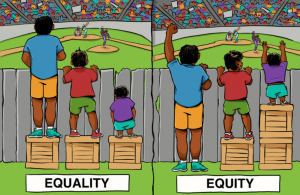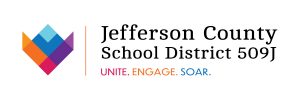Equity Lens
The Jefferson County School District is committed to academic excellence and personal success for all our culturally enhanced learners. We must commit to a comprehensive, rigorous, equitable, and inclusive education to ensure high levels of learning for all. We actively build relationships with students and families to be responsive to the needs of our community. In our schools, dreams are nurtured, histories and cultural heritages are celebrated, a love of learning is fostered, and educational, physical, emotional and social needs are supported.
Our commitment to equity supports fostering an inclusive and barrier-free environment with urgency, accountability, and compassion. Educational equity is achieved by acknowledging that systemic institutional policies and practices can act as barriers to success. Examining, interrupting, and removing barriers will create conditions that lead to access and opportunity for every student. This equity lens is designed to ensure equitable decisions are made that provide for each student’s needs.

Equity Lens Questions:
The following questions are a guide and will be considered as part of our planning and decision making.
- Does this decision/action align with the district mission and equity belief? Yes or No
- In what ways does it align?
________________________________________________________________________________________________________________________________________________
- Are those being affected by the decision, policy, or program included in the process?
- How have those being affected been intentionally involved in the process? ________________________________________________________________________________________________________________________________________________
- Is there support or opposition to the proposal? Why? ________________________________________________________________________________________________________________________________________________
- Does the proposed action address barriers to equitable outcomes or create new barriers? (e.g. mandates, politics, finances, community expectations, geographical location, etc.)
- What are the barriers being addressed with the proposal? ________________________________________________________________________________________________________________________________________________
- How will the proposal address these barriers? ________________________________________________________________________________________________________________________________________________
- What information/data are you basing your decision or action upon?
________________________________________________________________________________________________________________________________________________
- How will the impact or outcome be measured? ________________________________________________________________________________________________________________________________________________
- Is this decision/outcome sustainable? ______________________________________________________________________________________________________________________________________
- Did the action produce the desired outcome? (Monitoring Purposes) _____________________________________________________________________________________________________________________________________
|
Jefferson County School District Equity Lens
|
|
When making decisions and taking action, we will utilize the following questions:
|
● Is the decision/outcome sustainable?
|
| Word/Phrase | Definition |
| Barrier Free Environment | An environment where financial resources, geographical location, politics, community expectations, and mandates do not impact the education and success of our students. |
| Comprehensive Education | An education that is complete. |
| Educational Equity | Educational equity means that each child receives the resources, opportunities, skills, and knowledge that they need to develop to their full academic and social potential. |
| Equality | Equality in education refers to students all being treated the same and having access to the same resources. |
| Equity Lens | An equity lens is a process for analyzing the impact of the design and implementation of policies on underserved individuals and groups, and to identify and potentially eliminate barriers. |
| Inclusion | The act of including students who have historically been excluded because of race, gender, sexuality, or ability. |
| Rigor | Using inquiry-based, collaborative strategies to challenge and engage students in content, resulting in increasingly complex levels of understanding. |
| Systemic Institutional Policies | Examples could include policies around attendance/truancy, homework, dress code, parent engagement, and discipline. |
| Underserved Students | Students whom systems have placed at risk because of their race, socioeconomic status, English language proficiency, sex, sexual orientation, differently abled, national origin and/or geographical location. |

